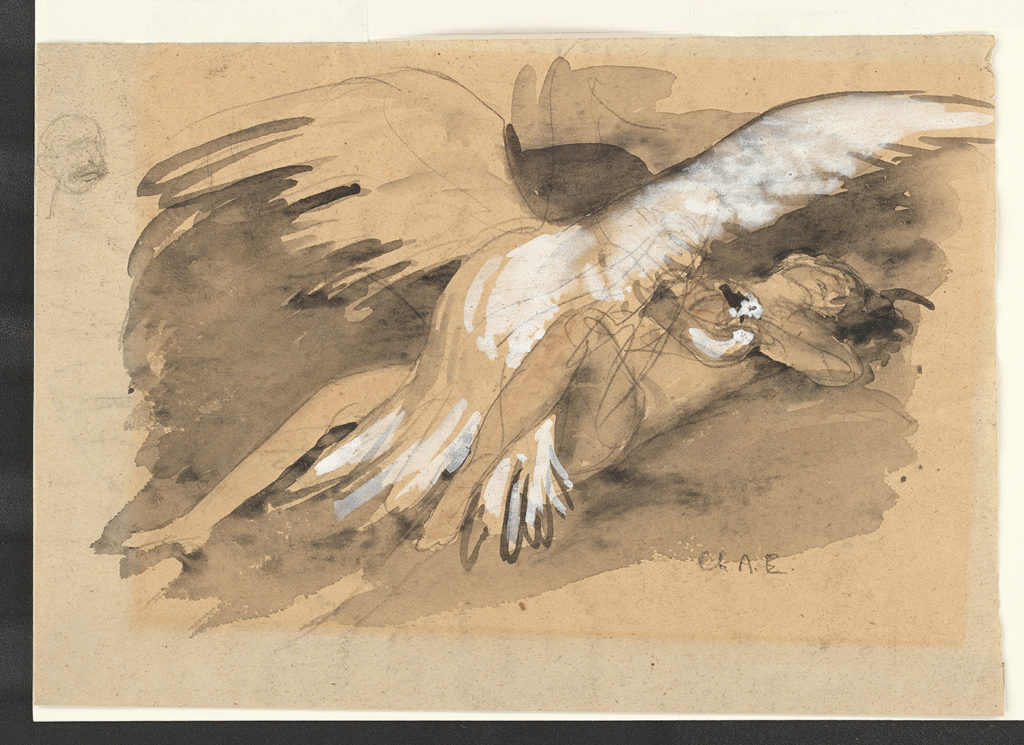It is a brilliant example of Charles-Auguste Edelmann’s interest for nudes and eroticism, through classical themes and scenes. Formed at the École des Beaux Arts de Paris in Jean-Léon Gérôme and Ferdinand Humbert’s studios, at the turn of the finishing 19th c., the artist started his career with scenes of misery and poverty. Later, he focused his attention on Parisian life, depicting mostly women and giving a great attention to nudes. According Francis de Miomandre, it was only then that he found his proper style: “ (…) il ne pouvait s’empêcher de s’intéresser surtout à ce côté immédiat, personnel de leur plastique : l’épiderme, les jeux de la lumière sur lui, et ces autres jeux de l’organisme, qui le font vivre, lui impriment des formes, déterminant ses mouvements”. His works were mostly related to women in familiar situations, lying on a bed, or standing at their dressing table, and to a few mythological subjects relating to Bacchic themes, as for instance Scène Bacchique and Femme dans un hamac entourée de faunes musiciens, in the collection of Françoise et Jacques Subes.
Representing the erotic encounter of Sparta’s queen, Leda, with Zeus in the form of a swan, Edelmann represents Leda grabbing of the swan’s head, in an ecstatic attitude, with her neck exposed and her legs opened. With the woman lying underneath the swan, the composition follows Michelangelo’s path. In France, this model had been reinterpreted by Léon Riesener in 1840, with a painting, Léda et le cygne (Musée des Beaux-Arts, Rouen), that inspired a lot of painters at the end of the 19th century, such as Renoir and Cézanne. In the perspective of Edelmann’s production, this drawing could also be associated to his illustrations for erotic literature.






